Introduction
SWOT analysis is a powerful tool that enables businesses to evaluate their internal strengths and weaknesses, as well as external opportunities and threats. In this article, we will explore the significance of understanding threats in SWOT analysis and how it can help businesses navigate the complex landscape of competition, market dynamics, technology, regulations, and more. By identifying and mitigating threats, companies can fortify their strategic plans and ensure resilience in competitive environments.
We will also delve into real-life case studies that demonstrate how businesses turned threats into success stories through strategic content marketing. Join us as we uncover practical advice and solutions to empower CFOs in addressing threats and driving sustainable growth.
Understanding Threats in SWOT Analysis
SWOT analysis, an essential strategic planning tool, enables businesses to pinpoint factors that are advantageous or detrimental to their operations. A thorough SWOT analysis is composed of strengths, weaknesses, opportunities, and threats, each representing internal or external aspects that could influence the company's future. It serves as a cornerstone for evaluating a company's market position and facilitating the strategic planning process.
Threats, the 'T' in SWOT, are external factors that could potentially harm the business's performance or strategy. These could range from emerging competitors, shifts in consumer preferences, market volatility, to regulatory changes. For instance, take Coca-Cola's transformative journey from a pharmaceutical concoction to a global beverage leader.
Initially, as a response to the looming prohibition era, Coca-Cola pivoted from an alcoholic tonic to a nonalcoholic beverage, illustrating how external threats can catalyze significant strategic shifts.
A well-executed analysis of threats requires an awareness of the broader industry context and the agility to adapt strategies accordingly. Engaging stakeholders to gather pertinent data, businesses can conduct a SWOT analysis that not only highlights current vulnerabilities but also prepares them for unforeseen challenges.
Moreover, the SWOT framework is not static; it demands regular reviews to ensure that the business remains aligned with the ever-changing market dynamics. By understanding and managing threats, companies can fortify their strategic plans, ensuring resilience and sustained growth in competitive environments.
Identifying External Threats
When conducting a SWOT analysis, identifying external threats is pivotal for organizations to safeguard their success. External threats are circumstances or events outside of a company's control that could potentially have a negative impact on its performance. These can range from technological advancements that render a company's products obsolete, to regulatory changes that require costly compliance measures, or even shifts in consumer behavior that lead to a decrease in demand.
-
Technological Advancements: With the rapid pace of innovation, companies must stay vigilant. For example, cybersecurity threats are constantly evolving, as illustrated by a case where a data engineer with extensive access to critical data became the target of a cyberattack. This demonstrates the need for businesses to continuously monitor technological trends and vulnerabilities to protect their data and infrastructure.
-
Market and Economic Conditions: Fluctuations in the economy can have significant implications for businesses. Recent surveys indicate that 21% of businesses with 10 or more employees had exported in the last year, but 24% reported a decrease in exports, highlighting the volatility in international trade and the importance of being prepared for economic shifts.
-
Regulatory Changes: New legislation can introduce compliance challenges. For instance, businesses are increasingly required to manage insider threats, with a Gartner study predicting that 50% of organizations will adopt formal programs by 2025, up from 10% today. This reflects the growing emphasis on internal security and the necessity for companies to anticipate and adapt to legal changes.
-
Competitive Pressures: Competition can also be a significant external threat. The case of package theft underscores the need for businesses to consider operational risks and develop strategies to mitigate them. As competitors devise new ways to attract customers, such as by addressing security concerns like porch piracy, companies must find innovative solutions to remain competitive.
A well-executed SWOT analysis will not only highlight these threats but also help businesses strategize on how to use their strengths to mitigate risks and seize new opportunities. By integrating the insights from SWOT with a forward-looking approach, companies can navigate external threats and position themselves for long-term success.
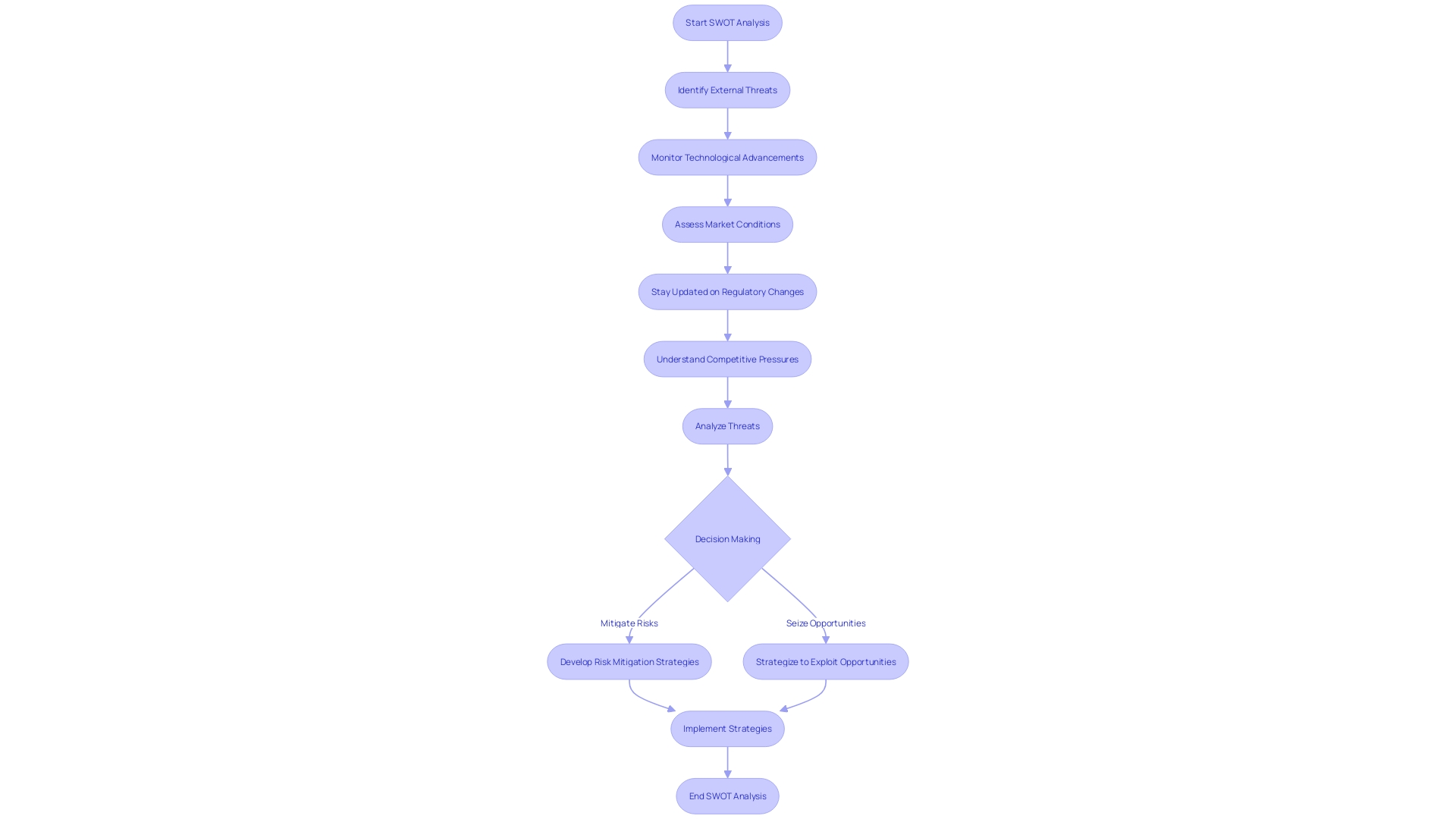
Examples of Threats in Content Marketing
In the dynamic landscape of content marketing, businesses face evolving threats that can dampen their efforts to engage with their target audience. Declining organic reach, intensifying competition, and shifts in consumer preferences are just a few examples of the hurdles that lie ahead. Let's delve into how businesses can navigate these challenges to maintain the potency of their content marketing strategies.
Organic reach is no longer a given, with search traffic to a site being a collection of URLs, each earning varying amounts of monthly traffic. The lifecycle of content's organic traffic shows that after a peak, there's often a slow decay. To counter this, companies must explore new technologies and trends that resonate with their audience.
For instance, a focus on trending topics like sleep medicine can lead to content that truly answers audience questions and stands out among the noise.
Competition is also on the rise, necessitating fresh concepts to captivate new market segments. A content agency, OTW, devised a unique approach for Volvo Penta to attract people to the world of boating, diverging from typical marine leisure visuals and narratives. An effective strategy involves listening intently to customer insights and crafting content that aligns with their interests and industry innovations.
Moreover, with generative AI transforming content creation, the sheer volume of content is no longer sufficient. Businesses must invest in quality and differentiation to avoid blending into the background. Marketers are advised to regularly set aside time to explore AI tools and apply them to accelerate content creation and enhance its appeal.
To address these challenges, engaging with internal subject matter experts and asking open-ended questions can yield insights that inform content direction and innovation. This strategy ensures that content marketing efforts are not only effective but also strategically aligned with audience needs and business goals.
Competitor Analysis as a Threat
Competitor analysis is a critical component in understanding the landscape in which a business operates. It not only highlights potential threats but also uncovers areas where a company can establish a competitive edge. The process involves meticulous research, starting with a focus on direct competitors—those offering similar products within the same market.
Expanding to indirect competitors is also crucial, as it paints a complete picture of all alternatives available to customers.
For a methodical approach, businesses can utilize a template with columns to capture key data points such as mission statements, pricing, top features, strengths, weaknesses, and unique differentiators. This structured approach ensures that all aspects of the competition are examined, and findings can be summarized on visual aids like sticky notes. Ranking the strength of each area further clarifies where a business stands in comparison to its competitors.
Beyond accumulating facts, presenting the findings in a narrative form can significantly enhance the impact of the analysis. Discussing the type of competition faced sets the stage before diving into specifics about each competitor. This storytelling technique aids in making the information memorable and actionable.
Ultimately, the goal of a competitor analysis is to carve out a distinct place in the market. By dissecting the four Ps—product, price, place, and promotion—businesses can discern their competitors' marketing strategies and tactics. This insight is essential for avoiding their mistakes and seizing missed opportunities to optimize marketing efforts.
Understanding the consumer base is the foundation of this process. Gathering demographic information such as age, wealth, family, interests, and location answers critical questions about demand, market size, economic indicators, and customer reach, facilitating strategic decision-making.
In a world where the median retirement income and living wages are topics of public interest, economic factors play a significant role in shaping consumer behavior and market dynamics. A well-conducted competitor analysis, therefore, is not just about knowing the competition; it's about understanding the broader market context to inform business strategy.
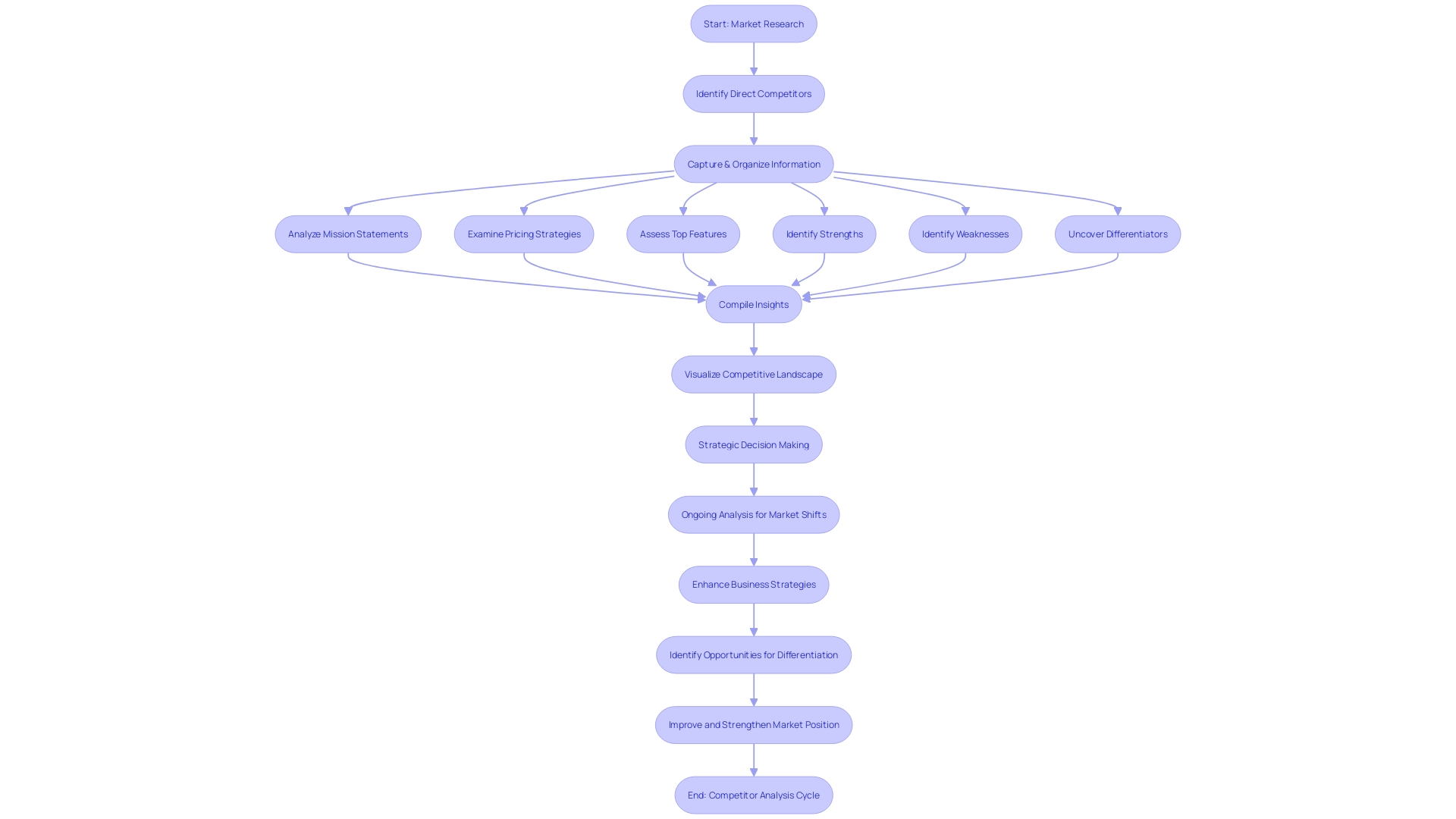
Market and Economic Threats
Navigating the complex landscape of market and economic threats is a critical component of strategic planning for businesses. Consumer trends are constantly evolving, and economic downturns or market saturation can pose significant risks to a company's performance. Through the lens of SWOT analysis, which stands for Strengths, Weaknesses, Opportunities, and Threats, businesses can systematically address these external factors.
- Consumer Trends: As tastes and preferences shift, companies must stay agile. Engaging in continuous market research allows for the early identification of new consumer behaviors, enabling businesses to adjust their offerings and marketing strategies accordingly.
- Economic Recessions: Economic downturns can strain cash flows and shake investor confidence. Keeping a close eye on economic indicators, such as inflation rates and consumer spending patterns, can inform more resilient financial planning.
- Market Saturation: In crowded markets, standing out becomes increasingly difficult. SWOT analysis guides companies to leverage their unique strengths, such as proprietary technology or strong brand identity, to differentiate themselves from competitors.
In the throes of economic uncertainty, as evidenced by the fluctuating pound and Bank of England's interest rate adjustments, the importance of a well-rounded SWOT analysis becomes even more pronounced. It equips businesses to not only manage existing strengths and weaknesses but also to forecast and respond to opportunities and threats arising from the economic environment.
Moreover, geopolitical tensions and regulatory shifts highlighted in the recent news further underscore the necessity for businesses to assess their external environment thoroughly. A recent survey reveals a global sentiment of economic pessimism, with 67% of respondents across 28 countries feeling negative about their national economies. This reinforces the urgency for businesses to adapt strategies in anticipation of rising costs and other economic pressures.
Employing SWOT analysis to navigate these market and economic challenges ensures that businesses remain competitive and are prepared to mitigate threats while seizing any emerging opportunities.
Technological Threats
The dynamic landscape of technology presents a dual-edged sword for businesses; on one side, there's a wealth of opportunities, and on the other, a plethora of threats. Disruptive technologies, cybersecurity risks, and aging IT infrastructures stand as significant technological threats in a SWOT analysis. To navigate these challenges, businesses must adopt a proactive stance, embracing frameworks like the Responsible Innovation and Commercialization (RIC), which derives from the Responsible Research and Innovation (RRI) principles.
These principles, anticipation, reflexivity, inclusion, and responsiveness, guide organizations to align innovation with societal values and needs.
Anticipation involves foreseeing potential technological impacts, allowing businesses to prepare for or prevent threats. Reflexivity requires companies to examine their internal processes and external implications of their tech use critically. Inclusion brings diverse stakeholders into the decision-making process, ensuring a broad range of perspectives.
Responsiveness enables firms to react swiftly to technological changes or societal concerns.
For instance, the defense industry has seen the rise of new entrants providing innovative technologies, responding to the evolving needs of national security. This shift necessitates that traditional defense contractors and governmental institutions revamp their bureaucratic models to keep pace with rapid technological advancements. Failure to do so risks obsolescence in the face of agile competitors, as noted in the recent developments where defense tech startups are increasingly fulfilling demands.
Cybersecurity, a critical component of technological threats, is receiving heightened attention. Bob Zukis, CEO of the Digital Directors Network, emphasizes the need for corporate boards to enhance their understanding of systemic risks. With the digital realm becoming a battleground for cyber attacks, governance in cybersecurity is paramount for business continuity.
In this environment, where AI, quantum computing, and cyber threats are redefining the competitive landscape, organizations are forced to reevaluate their legacy systems. The dilemma is not just about adopting new technologies but also letting go of the old, as highlighted by the challenges faced by established entities trying to compete against more technologically agile competitors.
Ultimately, businesses must integrate cybersecurity strategies into their overall planning, understanding the financial implications of cyberattacks and designing defenses accordingly. The integration of up-to-date data on technological trends and economic impacts will support this strategic approach, ensuring companies are not only protected but also positioned to leverage technology for growth and innovation.
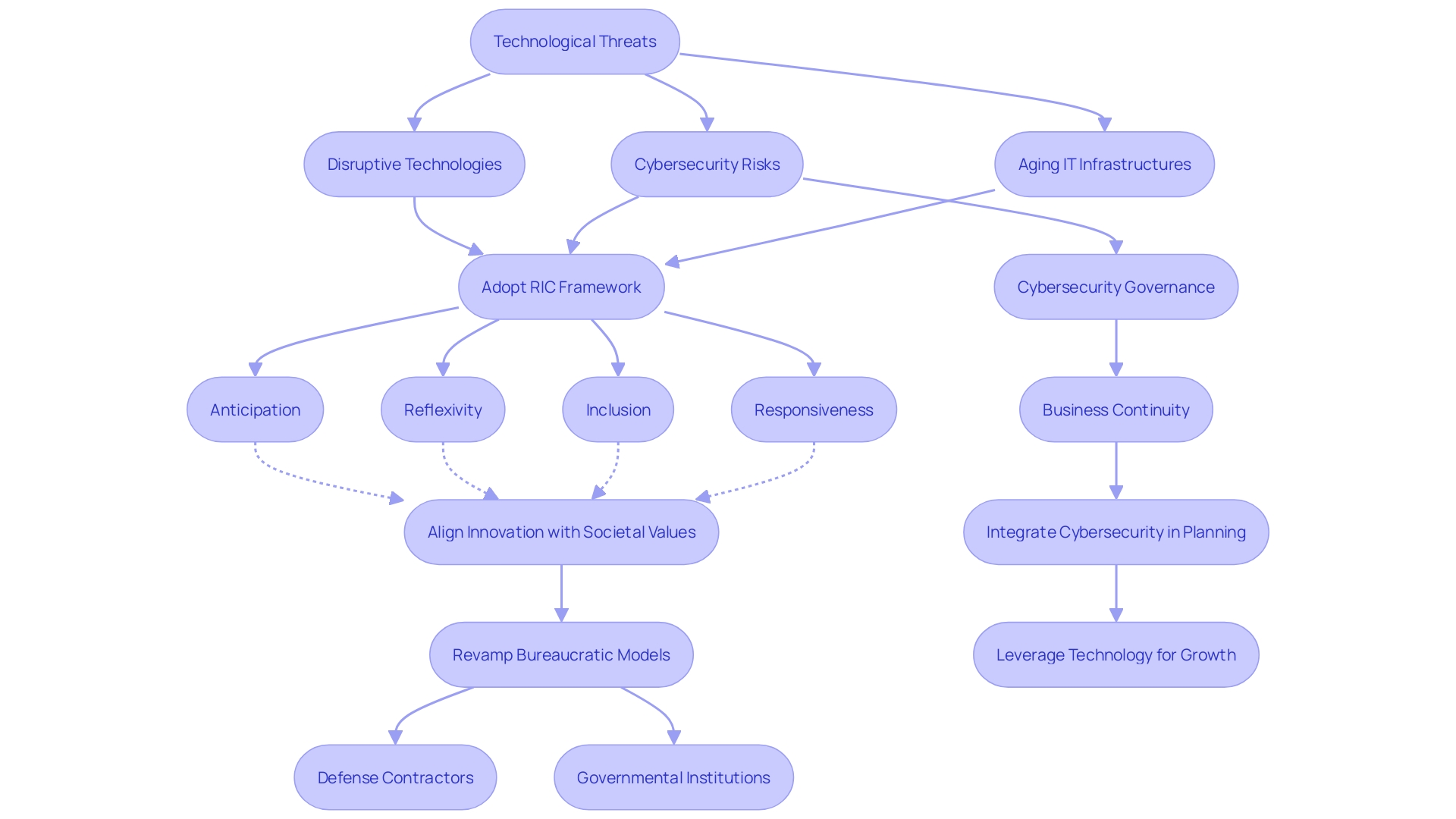
Regulatory and Legal Threats
Navigating the complex landscape of regulatory and legal challenges is crucial for businesses aiming to maintain a competitive edge. Recent examples have underscored the necessity for businesses to incorporate regulatory and legal threats into their SWOT analysis to proactively address potential risks. For instance, the evolution of the timeshare industry has demonstrated the impact of management companies' behaviors, including the manipulation of fees and obstacles for owners, on consumer trust and industry reputation.
Additionally, the emergence of cryptocurrency has posed unique challenges, such as those faced by De Grandpré Chait law firm, which required specialized software like Chainalysis to navigate the intricacies of blockchain transactions and maintain regulatory compliance.
In the financial sector, the economic equivalence of products and services raises questions about the validity of collateral in tokenized systems. It's essential to scrutinize the provider's role and the associated risks, especially in the absence of trusted third-party oversight, which can render tokens worthless and equate to unsecured lending. Moreover, regulatory capture, where incumbents have an advantage due to their influence on regulatory bodies, can significantly raise market entry costs for new players, as highlighted by the pharmaceutical industry's challenges with clinical trial costs and regulatory hurdles.
The dynamic regulatory environment, featuring initiatives such as the Biden administration's proposed retirement rule to safeguard Americans' savings, underscores the need for businesses to stay vigilant. With the Federal Trade Commission's antitrust lawsuit against Google and the pharmaceutical industry's legal contest against Medicare price negotiation, companies are reminded of the shifting regulatory landscape's implications for their operations.
Furthermore, regulatory studies, such as those by Wayne Crews, emphasize the 'hidden tax' of the regulatory state, highlighting the need for greater transparency and accountability in federal regulations. As businesses face the return of government regulation to pre-pandemic levels, it's imperative to understand the broader context, including geopolitical tensions and economic cycles, to effectively mitigate risks.
Incorporating these lessons and insights into a SWOT analysis enables businesses to better anticipate and adapt to regulatory changes, ensuring legal compliance and fortifying their strategic positioning in an ever-evolving marketplace.
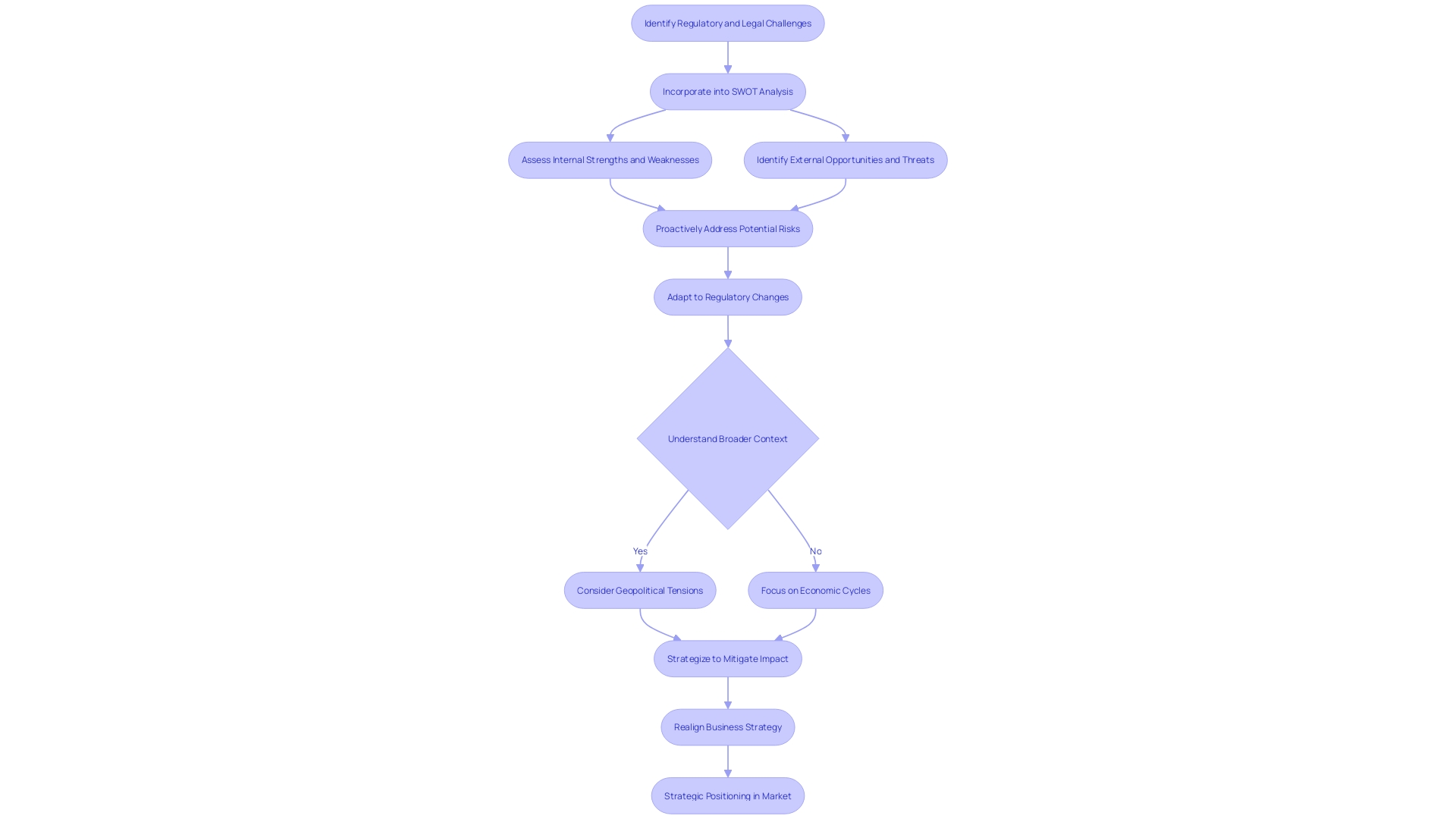
Mitigating Threats with Strategic Content Marketing
Content marketing, when harnessed effectively, can serve as a strategic counterbalance to threats unveiled in a SWOT analysis. This approach empowers businesses to craft targeted messaging that speaks directly to their audience's concerns and interests. For instance, in the healthcare sector, understanding that sleep medicine is a focal point allows a pediatrics service line to create content that addresses trending questions about sleep, providing answers that resonate with patients' needs.
In the competitive boating industry, a novel approach by content agency OTW for Volvo Penta demonstrates how reimagining marketing strategies can captivate new demographics. Instead of traditional marine leisure visuals, OTW's campaign could potentially employ storytelling that appeals to a broader audience, illustrating the joy of boating beyond the conventional champagne-sipping elite.
Strategically designed content marketing can also amplify brand reputation and establish thought leadership. Through diligent research and understanding of market trends, companies can produce content that not only aligns with their strengths but also mitigates identified threats, turning potential challenges into new avenues for growth.
Acknowledging the objectives and potential external threats, such as regulatory changes or market shifts, organizations can leverage content marketing to bolster their position. The key lies in listening intently to market signals, analyzing relevant data, and crafting content strategies that align with the company's goals and the shifting landscape, as emphasized by insights from the Microsoft Digital Defense Report.
Ultimately, by integrating SWOT analysis with content marketing efforts, businesses can create a dynamic strategy that not only addresses immediate threats but also positions them for long-term success.

Using SWOT Analysis to Inform Content Strategy
Harnessing SWOT analysis can be instrumental in shaping a content strategy that is not only robust but also closely aligned with business aspirations. This analytical tool dissects an organization's internal Strengths and Weaknesses alongside external Opportunities and Threats to inform a comprehensive content approach. By utilizing SWOT analysis, companies can recognize their unique advantages, uncover content gaps, set priorities for content production, and establish measures for content efficacy.
Strengths within an organization, such as a skilled workforce, financial robustness, or advanced technological infrastructure, can serve as a foundation for content that highlights these competitive edges. Meanwhile, identifying weaknesses allows for targeted content that addresses and mitigates these areas. External opportunities and threats, discerned through SWOT, inform content that is responsive to the market environment and anticipates future trends.
For instance, in a landscape where digital trends and AI innovations are reshaping marketing, a SWOT analysis could identify an opportunity in leveraging these technologies for content creation. Moreover, acknowledging the challenge cited by over half of marketers in finding the right content for their audience, per the Content Marketing Institute, a SWOT-informed strategy could focus on human-centric content that resonates with the target demographic.
By regularly updating a SWOT analysis, businesses maintain the agility to adjust their content strategy in the face of shifting market conditions, thus sustaining a competitive edge. Engaging stakeholders in the SWOT process ensures a comprehensive view of the company's standing, which in turn refines the content strategy. Ultimately, a SWOT analysis enables businesses to craft a content strategy that not only showcases their strengths and manages weaknesses but also seizes opportunities and wards off threats.
Case Studies: Addressing Threats through Content Marketing
Exploring strategic content marketing, we delve into case studies of businesses that turned looming threats into success stories. These examples illustrate how companies pinpointed threats, crafted content strategies, and reaped the rewards of their innovative approaches.
Take the pediatrics service line focusing on sleep medicine. They tuned into the pulse of their meetings, listening intently to identify new technological advancements they could support. With sleep medicine as their priority, a deep dive into trending sleep-related topics was conducted.
They sought to create content that resonated with people's questions, rather than merely pushing what they believed was important.
Content agency OTW faced the challenge of capturing a new audience in the saturated marine market for their client Volvo Penta. Steering away from the typical imagery of luxury and leisure, they aimed for a fresh concept to welcome newcomers to boating.
In another instance, Tractable, a tech firm specializing in automotive solutions, leveraged expert content to garner attention. A ghostwritten article for one of their head executives quickly translated into a significant lead for their subrogation solution, proving the power of targeted content.
These snapshots of strategic content marketing showcase the diverse ways businesses can identify threats and wield content as a tool to not only address them but also to thrive.
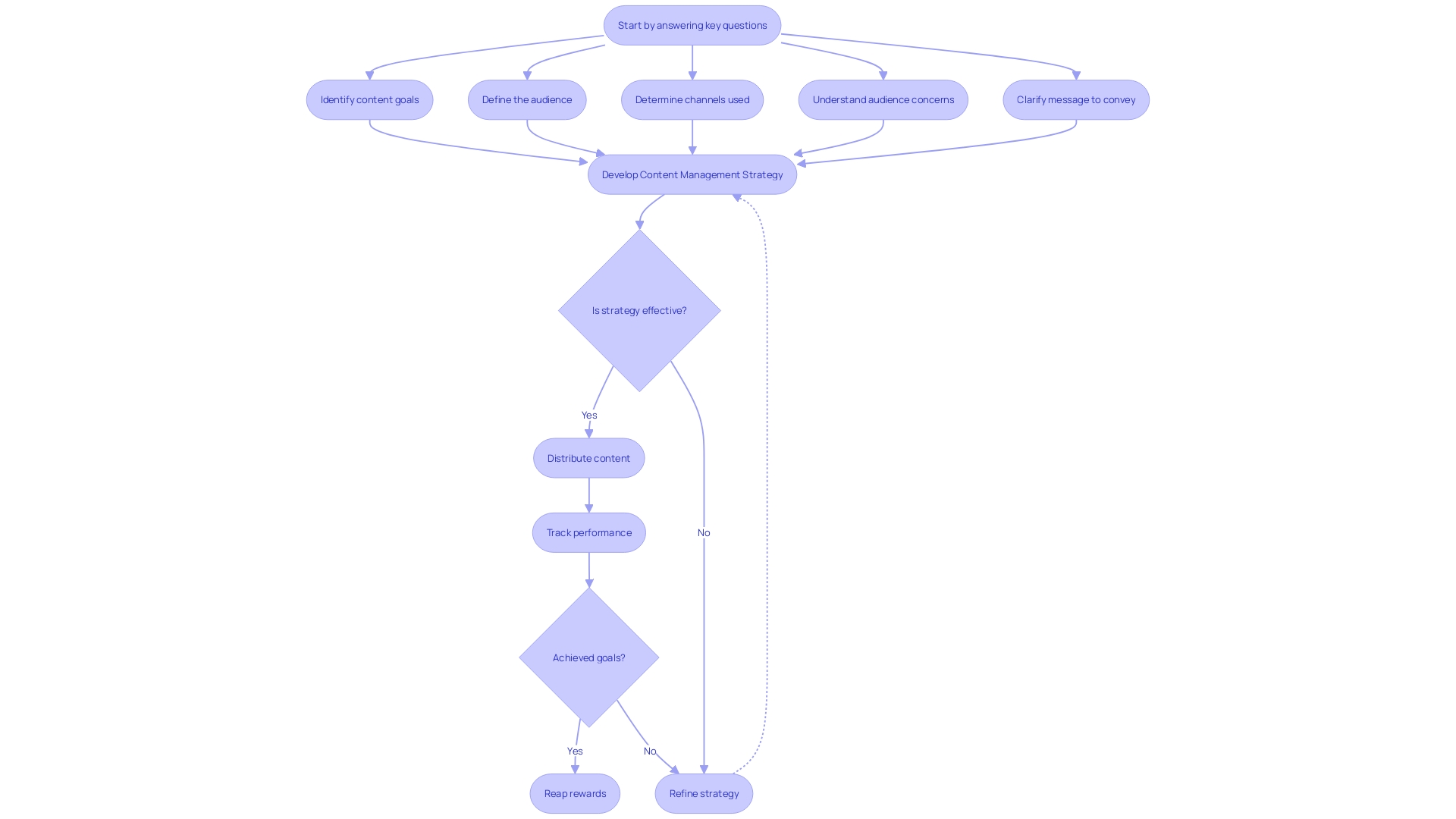
Conclusion
Understanding and mitigating threats through SWOT analysis and strategic content marketing empower businesses to navigate competition, market dynamics, technology, regulations, and more. By identifying and addressing external threats, companies fortify their strategic plans and ensure resilience in competitive environments.
External threats, such as emerging competitors, shifting consumer preferences, market volatility, and regulatory changes, require careful consideration. Engaging stakeholders and conducting a well-executed SWOT analysis enables businesses to highlight vulnerabilities and prepare for unforeseen challenges.
Technological advancements, market and economic conditions, regulatory changes, and competitive pressures are key external threats. Staying vigilant, monitoring trends, and conducting competitor analysis are crucial for businesses to thrive.
In the dynamic landscape of content marketing, declining organic reach, intensifying competition, and evolving consumer preferences pose challenges. Strategic content marketing allows businesses to address these hurdles by crafting targeted messaging, exploring new technologies, and investing in quality and differentiation.
Market and economic threats, such as evolving consumer trends, economic recessions, and market saturation, require businesses to adapt and leverage their unique strengths.
The dynamic landscape of technology presents opportunities and threats. Proactive measures, such as anticipating impacts, examining internal processes, and embracing cybersecurity, are critical for businesses to navigate technological challenges.
Navigating regulatory and legal challenges is vital for businesses to maintain a competitive edge. Incorporating regulatory and legal threats into SWOT analyses enables businesses to proactively address risks and ensure compliance.
Integrating SWOT analysis with content marketing efforts empowers businesses to create a dynamic strategy that addresses threats and positions them for long-term success. Real-life case studies demonstrate how strategic content marketing can turn threats into success stories.
In conclusion, businesses that understand and proactively address threats through SWOT analysis and strategic content marketing are better equipped to navigate the complex landscape, overcome challenges, and achieve sustainable growth. By staying agile, proactive, and aligned with market dynamics, businesses fortify their strategic plans and position themselves for long-term success.




